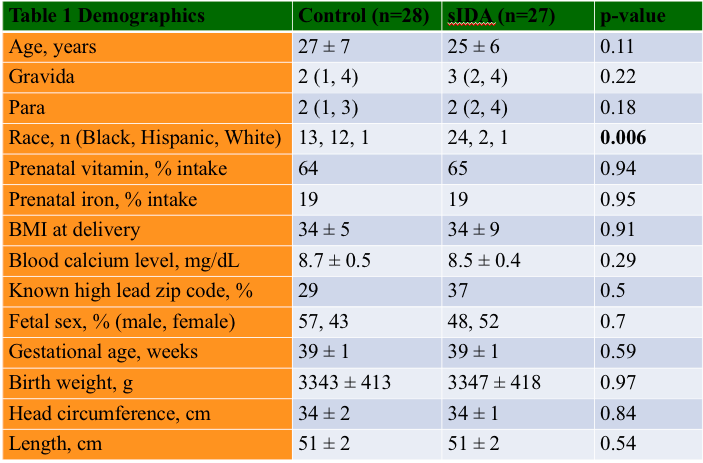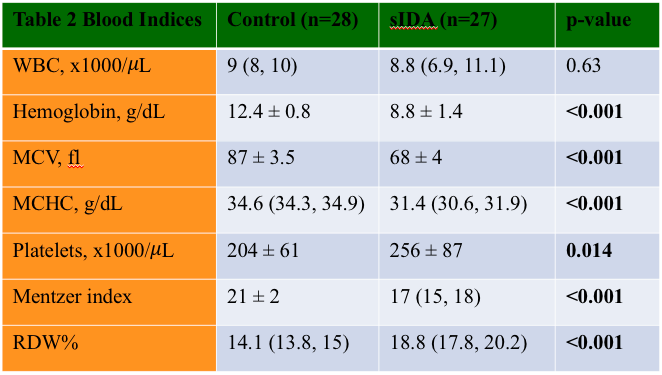Neonatology
Session: Neonatal General 3: Maternal and Fetal Medicine
84 - Association between Maternal Iron Deficiency Anemia and Cord Blood Lead Levels in Infants
Friday, May 3, 2024
5:15 PM - 7:15 PM ET
Poster Number: 84
Publication Number: 84.534
Publication Number: 84.534
- SI
Shannon M. Isennock, MD (she/her/hers)
Resident Physician
University of Tennessee Health Science Center College of Medicine
Memphis, Tennessee, United States
Presenting Author(s)
Background: Studies show 1) in iron deficiency anemia (IDA) in pregnancy, maternal levels of lead (Pb) are increased, 2) high maternal Pb levels are associated with increased cord blood (CB) Pb levels, and 3) increased CB Pb levels are associated with neurodevelopmental delay. No studies have evaluated if IDA in pregnancy is associated with increased CB Pb levels. Hypothesis: IDA in pregnancy is associated with increased CB Pb levels.
Objective: Primary objective: To measure Pb levels in CB collected from pregnancies with IDA and compare them to pregnancies without IDA. Secondary objective: To evaluate how pregnancies with IDA affect the CB levels of other metals like cadmium (Cd), mercury (Hg), and manganese (Mn).
Design/Methods: A prospective sample collection with a retrospective chart review case control study. Samples were analyzed by inductively coupled plasma dynamic reaction cell mass spectrometry. Selenium (Se) was included as part of the CDC predefined panel that measures the metals. Iron studies were predominantly not available. Patients were divided based on blood indices. Group 1 were cases of mothers with suspected IDA (sIDA) with Hemoglobin (Hb) < 9 g/dL, MCV of 65 to 75 fl, MCHC < 32.5 g/dL, and a Mentzer index >14. Group 2 were controls with Hb >12 g/dL, MCV of 80 to 95 fl, and MCHC >34 g/dL. Power=80%, α=5%, and to detect a mean Pb level difference of 0.2 μg/dL between the sIDA and the non-IDA group; a sample size of 30 in each arm was required. Unpaired t-test or Mann-Whitney U were used for comparisons. Exclusion criteria were chronic conditions, sickle cell disease, thalassemia, a Mentzer index < 14, mothers who received blood transfusion during pregnancy, infant-mother pairs where infants were treated for sepsis.
Results: 55 infants were included. There were no significant differences between both groups in maternal and infant demographics, Table 1. By design, pregnancies with anemia had significantly lower blood indices, Table 2. Pregnancies with sIDA had significantly lower Pb and Hg levels and a significantly higher Se levels when compared to non-anemic pregnancies, Table 3.
Conclusion(s): Contrary to our hypothesis, pregnant women with microcytosis and hypochromia had lower CB levels of Pb and Hg and increased CB levels of Se. Se may be playing a role in Pb and Hg absorption or transfer across the placenta. Other studies have shown that Pb and Se levels in blood are inversely proportional which may explain our findings. Future studies should evaluate simultaneous maternal and CB metal levels and the possible protective role of Se against heavy metals crossing the placenta.



